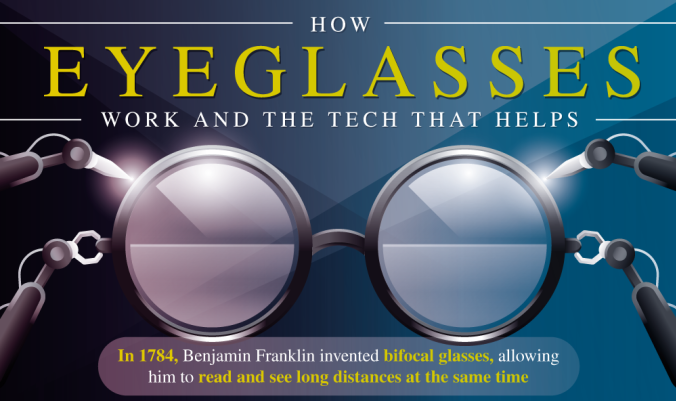If you can imagine, the invention of eyewear dates back to the 13th century – used by scholarly monks. Since, glasses have taken on a world of their own, influencing science, and science influence them. Today, 64% of the American population wears glasses – that’s about 184 million people numerically. We seem to be aware of the primary reasoning for glasses (astigmatism, myopia, and hyperopia); however, we have become numb to the basics of glasses themselves.
In the 18th century, glasses received a groundbreaking update. Temples were added to the design, extending the glasses over the ears to allow hands-free use. These were the first “wearable” glasses known to man. As time went on, the 19th century brought about mass-produce. This allowed frames and lenses to be rapidly developed to make glasses available to everyone.
Now we have the basics down pat. Our primary focus in optometry today is style. With the help and availability of plastic materials, the design of glasses – and their functionality – has become extremely flexible. Lenses have become lighter, less breakable, and coated to reduce harmful incoming light.
Knowing this, there are still more grounds to cover. Technology is reshaping eyewear, introducing the concept of smart glasses, nano-drops, and the Visual Cortical Prosthesis System- which can restore sight to the blind. Researchers around the nation are even developing auto-focusing smart glasses using eye-tracking software. This can help you focus on things near or far, regardless of your need for glasses.
Overall, the future of eyewear is an interesting path. Future technological advancements have the potential to offer great benefits to users in comparison to traditional lenses. Continue to the infographic below for information about the form and functionality of glasses, how glasses work, and how technology will improve the future of eyewear.


